Auch wenn sich die slowenische Hauptstadt Lujbljana klein und überschaubar präsentiert, an Sehenswürdigkeiten und Aktivitäten mangelt es ihr keinesfalls! Hier sind die absoluten Must-Sees im Überblick!
Das schmucke Ljubljana hat einen fixen Platz auf der Liste unserer Top 10 Sehenswürdigkeiten von Slowenien. Die zauberhafte und etwas verträumte Hauptstadt begeistert Slowenien-Urlauber mit ihrer historischen Altstadt, über der die Laibacher Burg thront, sehenswerten Brücken, Kirchen und Palästen und einer reichhaltigen Museen-Landschaft. Erholung und Entspannung ist an den lauschigen Ufern der Ljubljanica oder im malerischen Tivoli-Park zu finden.
Obwohl Ljubljana zu den kleinsten Hauptstädten Europas zählt, wird es in der grünen Stadt am grünen Fluss niemals langweilig. Vor allem im Sommer verlagert sich das Leben in Ljubljana nach draußen. Kaum ein Tag vergeht, an dem nicht an irgendeiner Straße oder auf irgendeiner Grünfläche eine kulinarische oder musikalische Veranstaltung stattfindet.
Gemeinsam mit der vielseitigen Architektur und dem kulturhistorischen Erbe macht sie ihrem Ruf als Kunst- und Akademie-Stadt alle Ehre, kurz – Ljubljana ist definitiv eine Reise wert. Um alle Sehenswürdigkeiten von Sloweniens Hauptstadt zu erkunden, sollte man je nach gewünschter Intensität 2 bis 4 Tage einplanen. Es ist aber auch möglich, die Top 10 Sehenswürdigkeiten von Ljubljana im Zuge eines Tagesausflugs zu besichtigen.
Wer alle Sehenswürdigkeiten von Ljubljana besichtigen möchte, begibt sich am besten auf unseren Stadtspaziergang durch Ljubljana, der selbstverständlich auch das historische Zentrum beinhaltet.
Inhaltsverzeichnis
Burg von Ljubljana
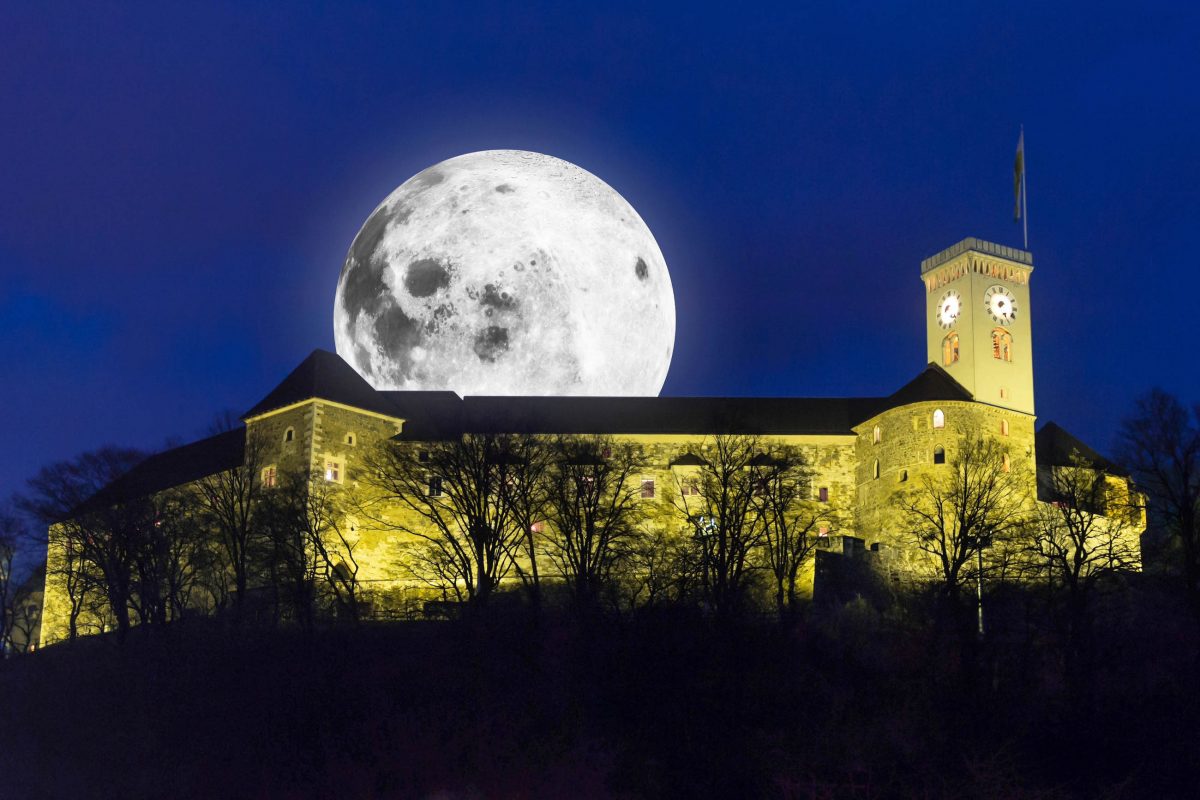
Die weithin sichtbare Laibacher Burg auf dem Schlossberg kann entweder zu Fuß oder per Standseilbahn erklommen werden. Das mittelalterliche Gemäuer lockt mit interessanten Ausstellungen und grandioser Aussicht. Die letzte große Erweiterung der Burg geschah im 17. Jahrhundert. Später diente die Burg noch als Festung und Gefängnis, heute finden in ihrem historischen Ambiente unter anderem Open-Air-Veranstaltungen statt.
Am Fuß des Schlossberges befindet sich außerdem der älteste Botanische Garten Sloweniens, der vor allem an heißen Sommertagen zum Flanieren einlädt. Der lauschige Park mit dem 12m hohen Tropenhaus zeigt 4.500 Pflanzenarten aus aller Welt und lädt zu einem rund 1stündigen Spaziergang ein.
Artikel: Burg von Ljubljana
Fotogalerie: Burg von Ljubljana
Drachenbrücke in Ljubljana

Die markante Drachenbrücke am Fuß des Schlossbergs gilt mit ihren lebensechten Drachenfiguren als Wahrzeichen von Ljubljana. Die im Jahr 1902 errichtete Jugendstil-Brücke war die erste Stahlbetonbrücke Sloweniens. Wer sich nicht mit einem der bronzenen Drachen fotografieren ließ, sei nicht in Ljubljana gewesen, heißt es.
Schöpfer der Drachenbrücke war niemand geringerer, als Jože Plečnik, Sloweniens größter Architekt. Er ließ die Jugendstil-Brücke im Jahr 1902 über der Ljubljanica errichten. Für die damalige Zeit ist die erste Stahlbetonkonstruktion der Stadt ein technisches Meisterwerk. Auch europaweit zählte die Drachenbrücke damals zu den ersten und größten Bauwerken aus Stahlbeton. Die Asphaltierung der Brücke war ebenfalls eine Premiere in Ljubljana.
Nachdem die Drachenbrücke zu Ehren des 40jährigen Thronjubiläums des österreichischen Kaisers Franz Josef I. eröffnet wurde, hieß sie ursprünglich Jubiläumsbrücke und sollte von geflügelten Löwen geschmückt sein.
Die erstaunlich lebensechten Drachenfiguren, die der berühmten Brücke schließlich ihren neuen Namen gaben, wurden von Jurij Zaninovich aus Dalmatien gefertigt. Dieser war ebenso wie Plečnik ein Schüler des großen Wiener Jugendstil-Meisters Otto Wagner. Ebenso faszinierend wie furchterregend zieren die grünen Drachen aus Kupferblech so manches Urlaubsfoto aus Ljubljana.
BILDER: Drachenbrücke in Ljubljana
Artikel: Drachenbrücke in Ljubljana
Fotogalerie: Drachenbrücke in Ljubljana
Prešeren-Platz und Tromostovje in Ljubljana
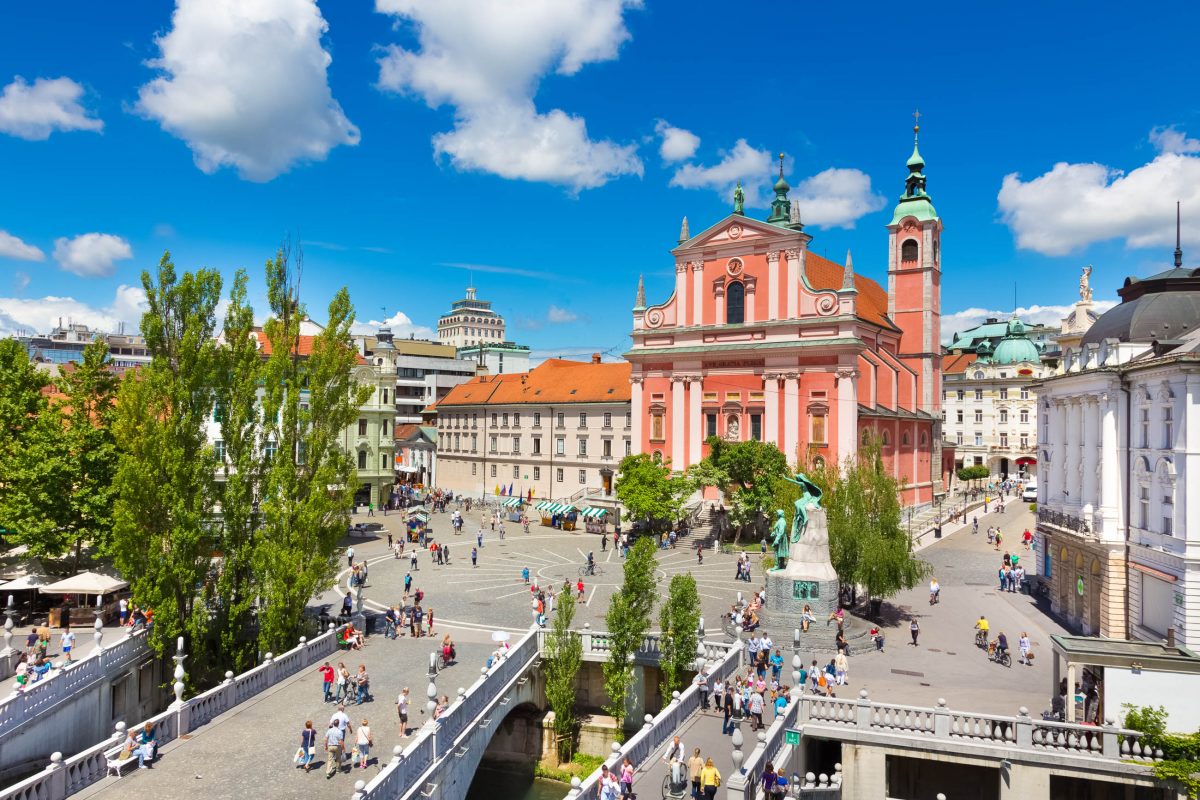
Der Prešeren-Platz entstand im 17. Jahrhundert gemeinsam mit der barocken Franziskanerkirche, die seine Nordseite einnimmt. Am Denkmal des namensgebenden slowenischen Nationaldichters befindet sich ein Energiezentrum von Ljubljana – wohl auch deshalb gilt er als perfekter Ausgangspunkt für einen Stadtspaziergang durch Ljubljanas Altstadt. Gleich an der Tromostovje, eine der berühmtesten Brücken von Ljubljana, befindet sich praktischerweise auch die Touristeninformation.
Artikel: Prešeren-Platz in Ljubljana
Fotogalerie: Prešeren-Platz in Ljubljana
Kongresssplatz (kongresni trg) in Ljubljana
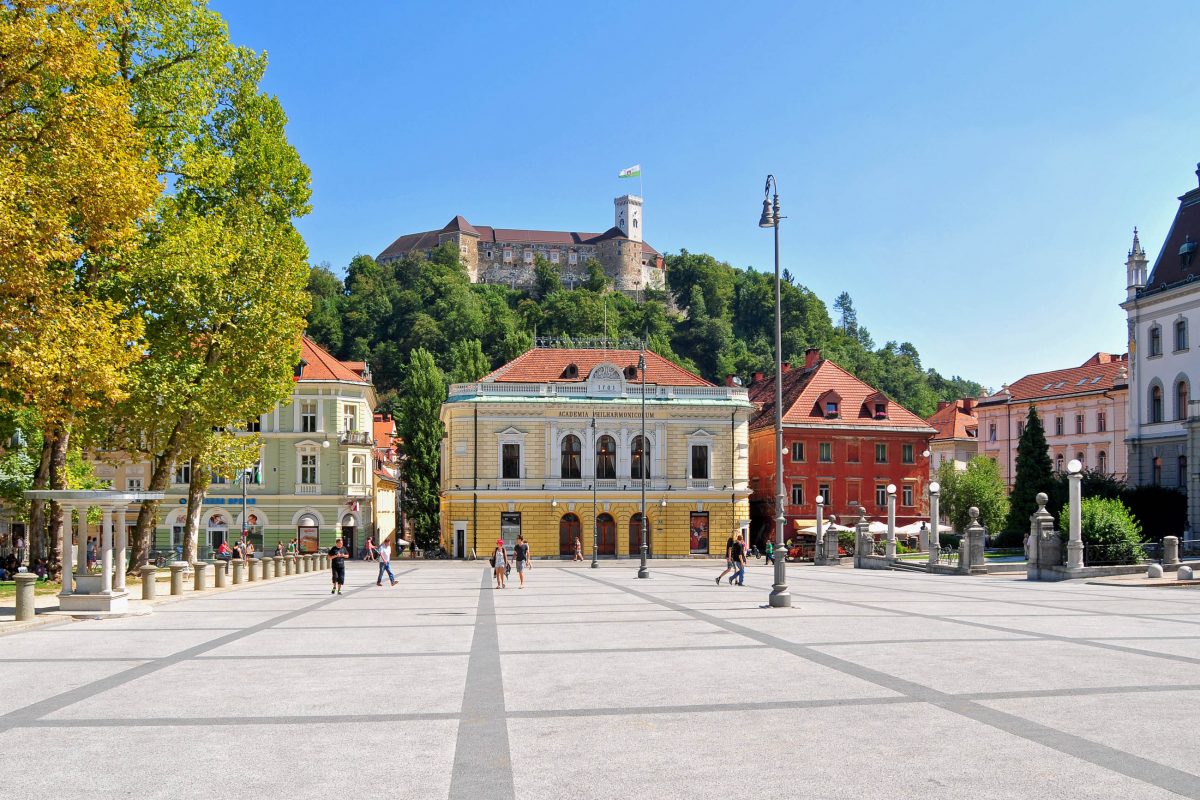
Auch der kongresni trg zählt zu den berühmten Plätzen von Sloweniens Hauptstadt. Einst für den Kongress der Heiligen Allianz errichtet ist der Kongress-Platz im Zentrum von Ljubljana bis heute von monumentalen Bauten geprägt. Besonders imposant präsentieren sich das geschichtsträchtige Gebäude der städtischen Universität und die säulenbewährte Dreifaltigkeitskirche, die mit ihrer markanten römisch angehauchten Fassade als ungewöhnlichster Barockbau der Stadt gilt.
Überragt vom Hügel der Laibacher Burg wird der Kongress-Platz an der Südseite von eindrucksvollen Fassaden und an der Nordseite von den Bäumen des Zvezda-Parks umrahmt. Auch der Palast der Slowenischen Philharmonie, das Schulmuseum und das Museum der Illusionen befinden sich hier.
Artikel: Kongressplatz (kongresni trg) in Ljbuljana
Fotogalerie: Kongressplatz (kongresni trg) in Ljubljana
Tivoli-Park in Ljubljana
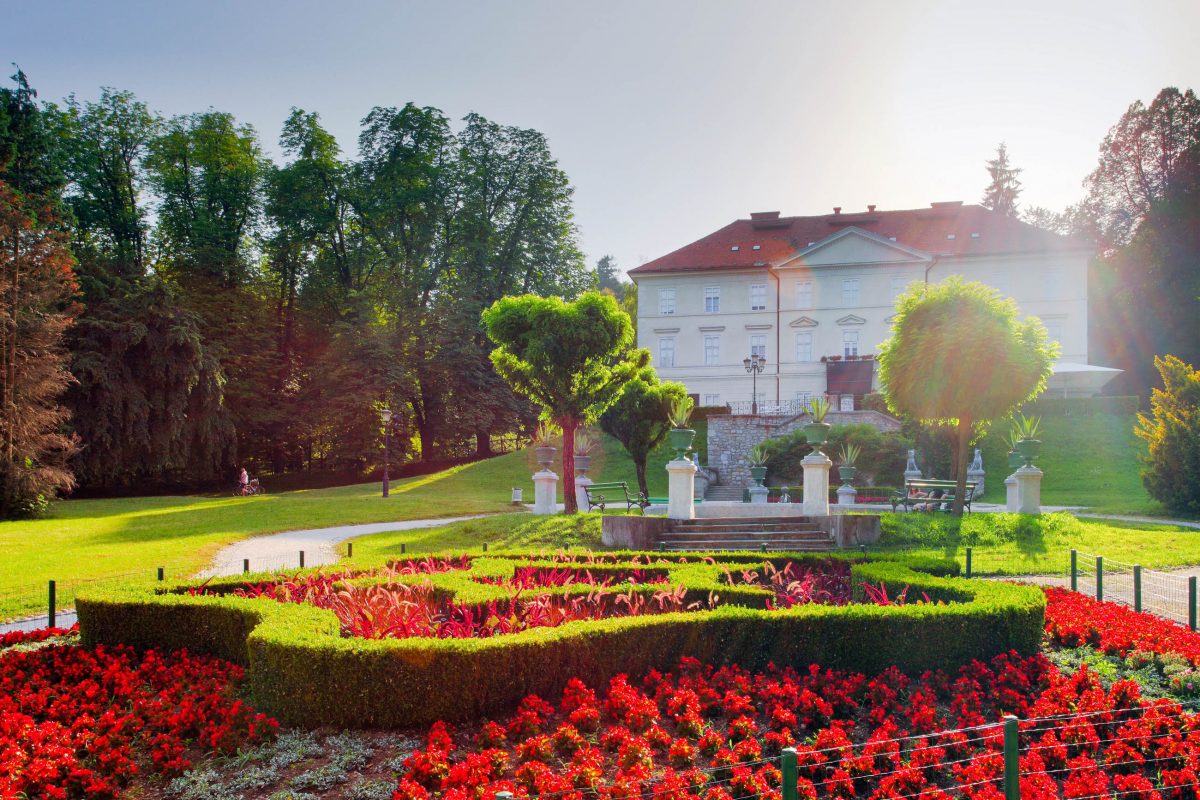
Der Tivoli Park ist als schönster Park der Stadt die grüne Lunge Ljubljanas und ein beliebtes Naherholungsziel. Er erstreckt sich über einer Fläche von rund 5 Quadratkilometern und beherbergt Museen, Schlösser, Sportplätze, Kinderspielplätze, Statuen und Brunnen – ein naturbelassenes Paradies, das zum Wandern und Entdecken einlädt.
Artikel: Tivoli-Park in Ljubljana
Fotogalerie: Tivoli Park in Ljubljana
Kathedrale des Hl. Nikolaus in Ljubljana

Als Hauptkirche der Diözese Ljubljana zählt die Kathedrale des Hl. Nikolaus zu den wichtigsten Sehenswürdigkeiten der Hauptstadt von Slowenien. Mit ihren beiden Türmen und der mächtigen Kuppel dominiert sie den Ciril-Metodov-Platz mitten in der Altstadt von Ljubljana. Das 1461 zum Bischofssitz ernannte Gotteshaus beeindruckt vor allem mit seinen unglaublich detailliert gestalteten Fresken.
Artikel: Kathedrale des Hl. Nikolaus in Ljubljana
Slowenisches Nationalmuseum in Ljubljana
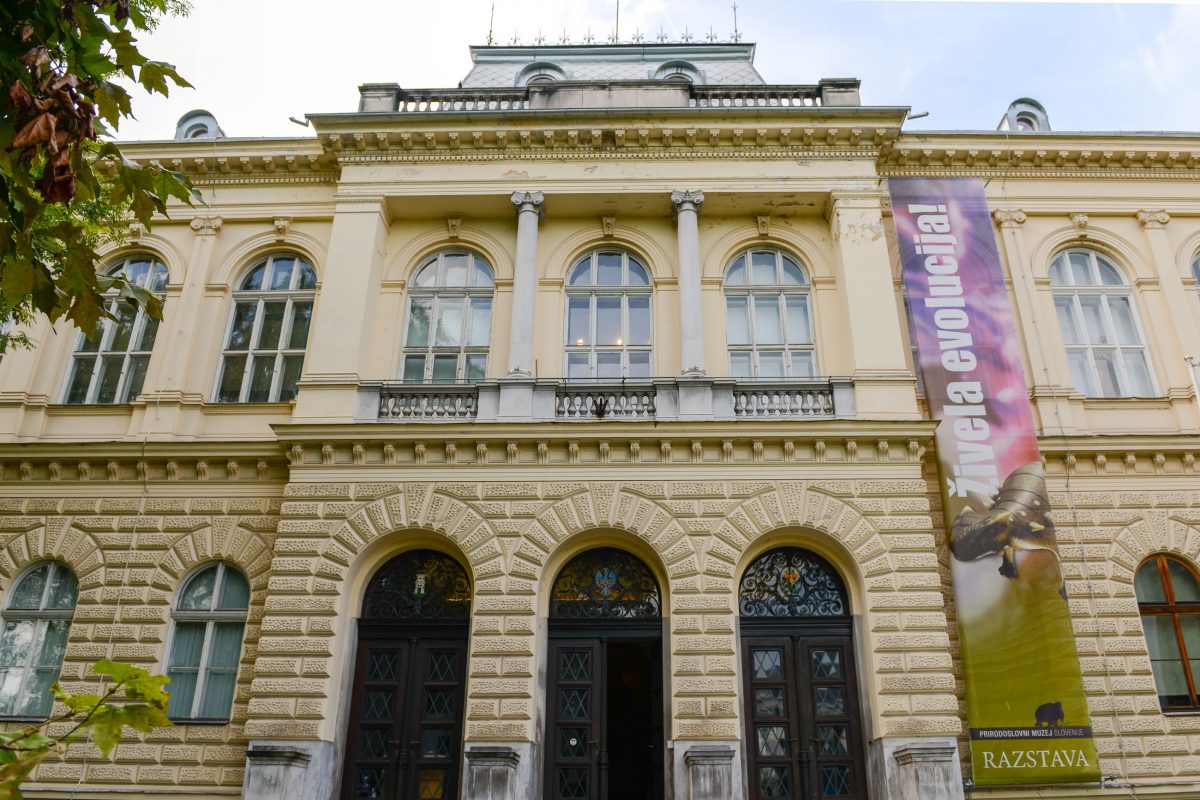
Das Nationalmuseum von Slowenien bietet gemeinsam mit dem Naturhistorischen Museum einen geologischen und biologischen sowie künstlerischen und kulturellen Streifzug durch Sloweniens Geschichte. Am 2. Dezember 1888 wurde es als erste ausschließlich kulturelle Einrichtung Sloweniens eröffnet.
Zu den Highlights im Nationalmuseum von Slowenien zählen das älteste Musikinstrument der Welt und Europas besterhaltenes Exemplar eines Wollmammuts, dessen Skelett nahezu vollständig ausgegraben wurde.
Artikel: Slowenisches Nationalmuseum in Ljubljana
Plečnik-Haus in Ljubljana
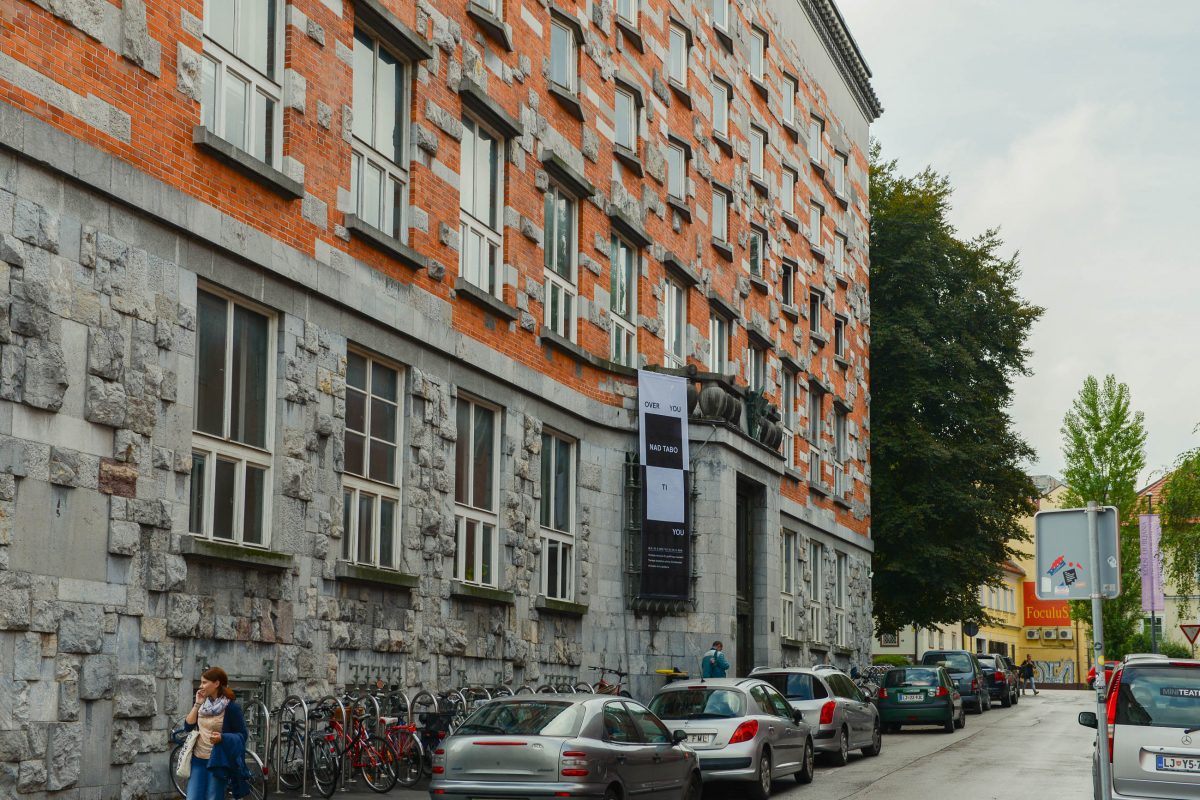
Jože Plečnik ging als größter Architekt Sloweniens in die Landesgeschichte ein. Sein architektonisches Vermächtnis ist über ganz Ljubljana verstreut, einige der berühmtesten Wahrzeichen der Stadt wurden von ihm geschaffen. In seinem ehemaligen Wohnhaus südlich der Altstadt von Ljubljana kann sein Lebenswerk nachvollzogen werden.
Artikel: Plečnik-Haus in Ljubljana
Nationalgalerie in Ljubljana
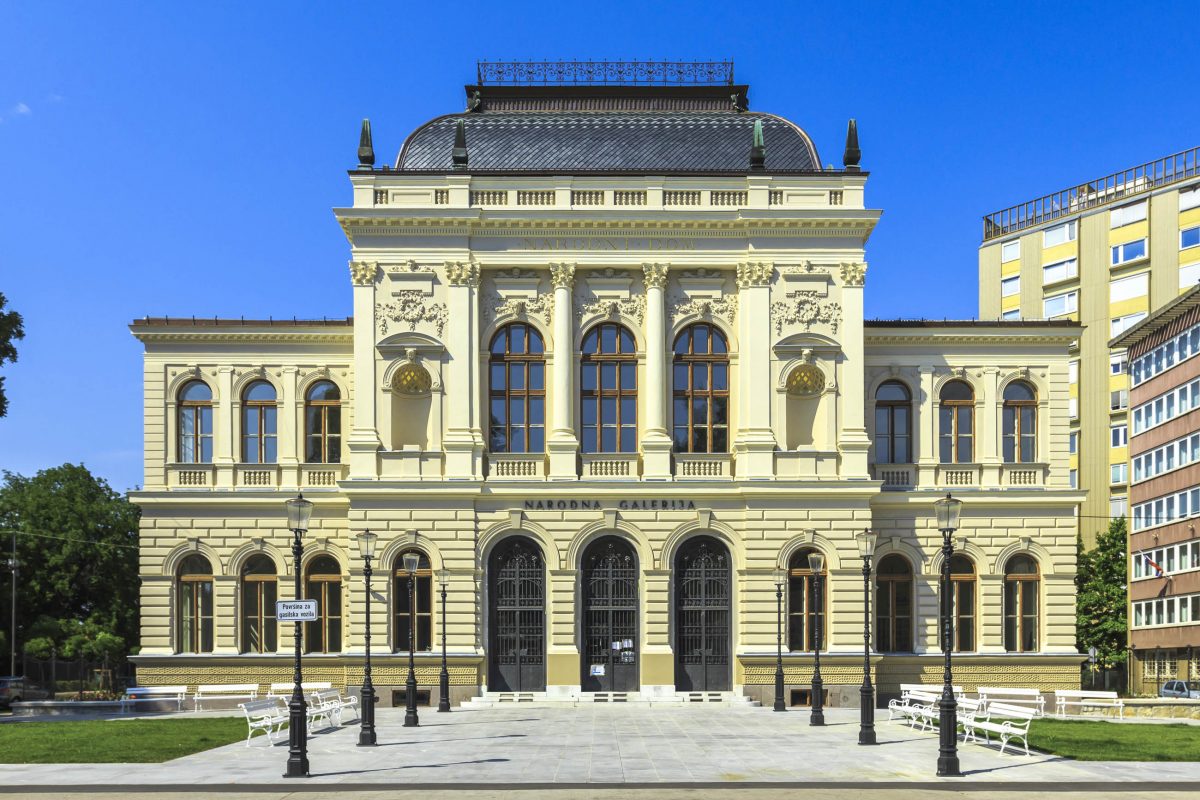
Die Nationalgalerie in Ljubljana bietet einen vollständigen Streifzug durch die Kunstepochen in Slowenien. Ihr elegantes Neo-Renaissance-Gebäude wurde im Jahr 1896 vom Prager Architekten František Edmund Škabrout erbaut und beherbergt vom Hochmittelalter bis zum 20. Jahrhundert die größte Kunstsammlung des Landes. Gemeinsam mit dem Museum für Moderne Kunst deckt die Nationalgalerie alle Kunstepochen ab.
Der Fokus der Kunstsammlung liegt auf Gemälden und Skulpturen slowenischer und europäischer Künstler. Unter den rund 600 Werken befinden sich mittelalterliche Kirchenkunst, barocke und neoklassizistische Gemälde, sowie berühmte Werke des slowenischen Realismus und Impressionismus.
Dem jugoslawisch-italienischen Maler und Grafiker Zoran Mušič, einem der wichtigsten modernistischen Künstler des 20. Jahrhunderts, ist in der Nationalgalerie eine eigene Dauerausstellung gewidmet.
Ebenfalls erwähnenswert ist das Original des Brunnens der Drei Krainer Flüsse, dessen Kopie heute vor dem Rathaus zu bewundern ist. Die Skulptur wurde vom italienischen Barock-Bildhauer Francesco Robba entworfen, der unter anderem auch die prächtigen Hochaltäre in der Franziskanerkirche und der Dreifaltigkeitskirche schuf.
Ein weiterer ebenfalls aus der Kirchenkunst bekannter Künstler in der Nationalgalerie ist Giulio Quaglio, Schöpfer der bemerkenswert detailreichen Fresken in der Kathedrale von Ljubljana.
Nach einem Streifzug durch die Kunstepochen bietet sich eine kurze Pause im Museums-Café oder ein Zwischenstopp im Galerie-Shop an. Wer sich an den Kunstwerken noch immer nicht sattsehen konnte, kann in der gemütlichen Leseecke des Shops weiter schmökern.
Mehr Info: Offizielle Website der Slowenischen Nationalgalerie in Ljubljana
Parlament in Ljubljana
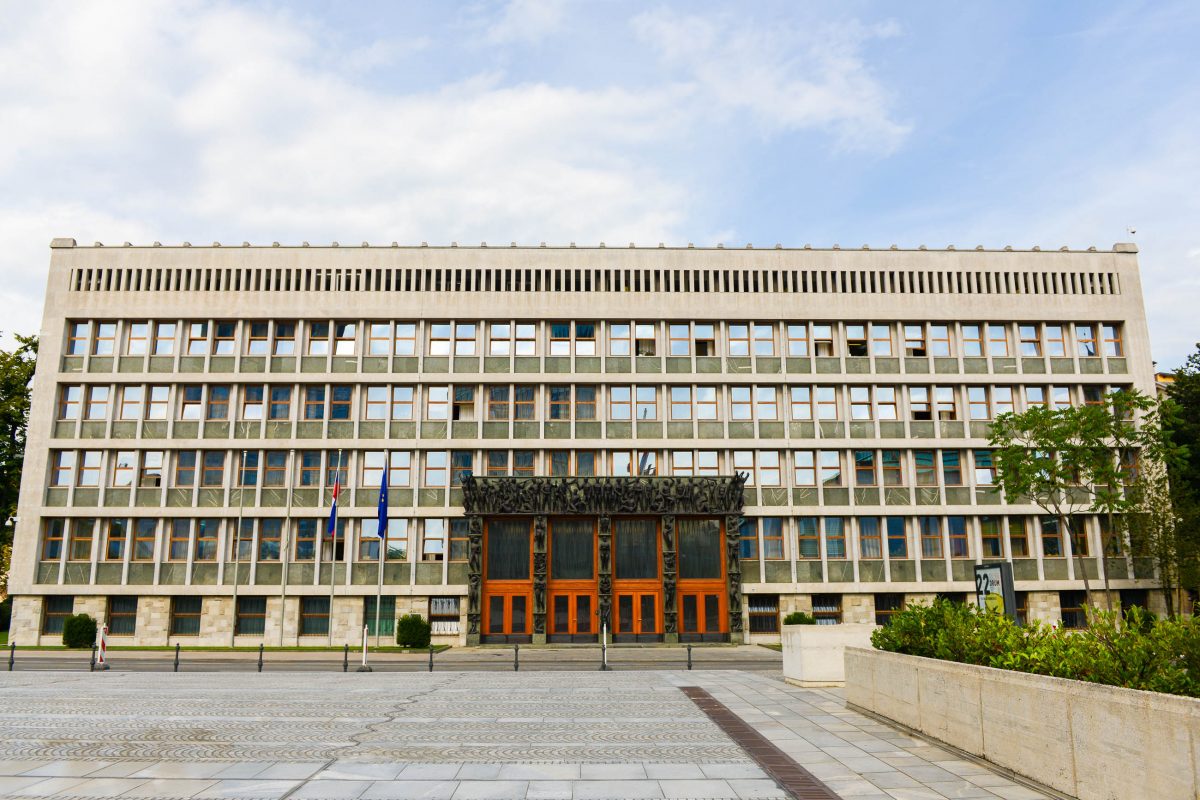
Das Parlamentsgebäude in Ljubljana offenbart seine architektonische Einzigartigkeit erst auf den zweiten Blick. Am 19. Februar 1959 wurde es mit der ersten Versammlung eröffnet. Als Slowenien 32 Jahre später unabhängig wurde, zog das Slowenische Parlament mit der Staatsversammlung und dem Staatsrat hier ein.
Nach Voranmeldung können Besucher das Gebäude im Zuge von kostenlosen Führungen kennenlernen und sogar die Teilnahme an parlamentarischen Sitzungen ist möglich.




